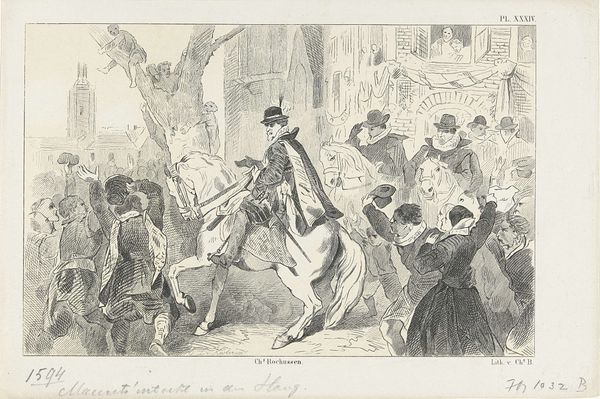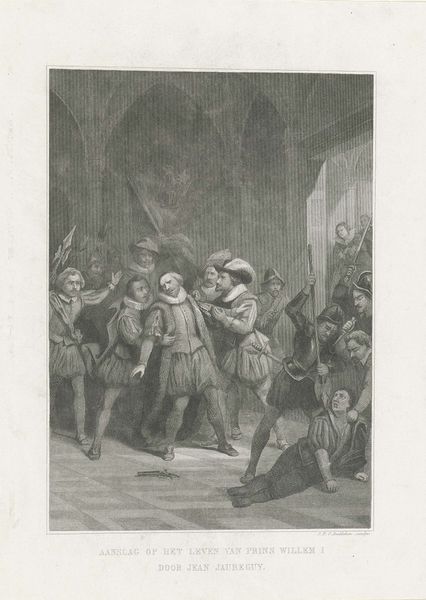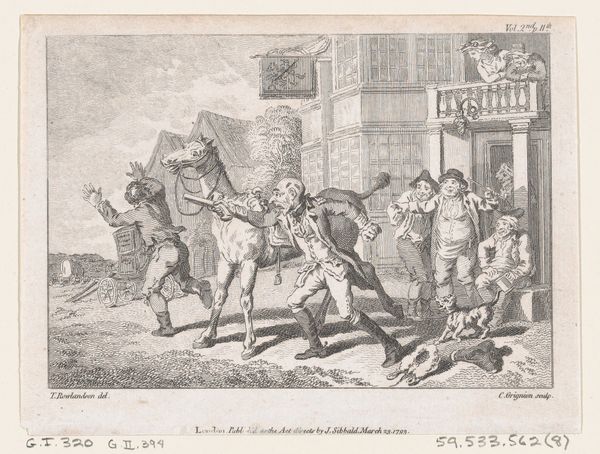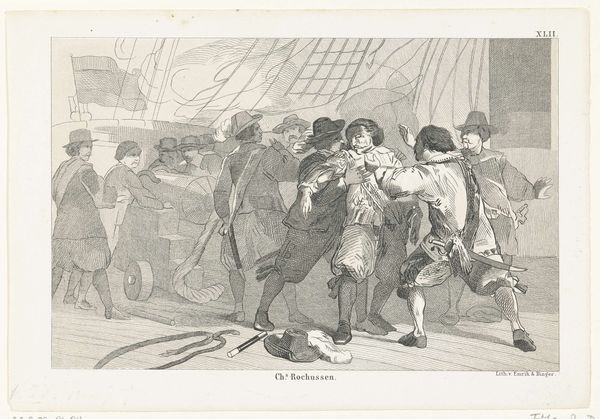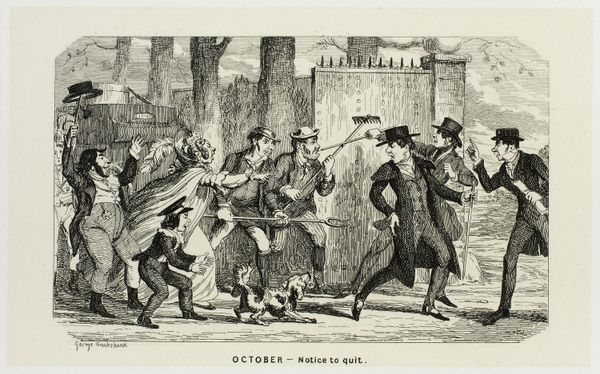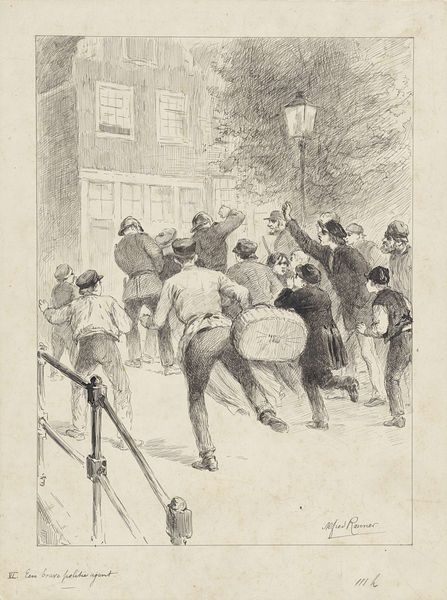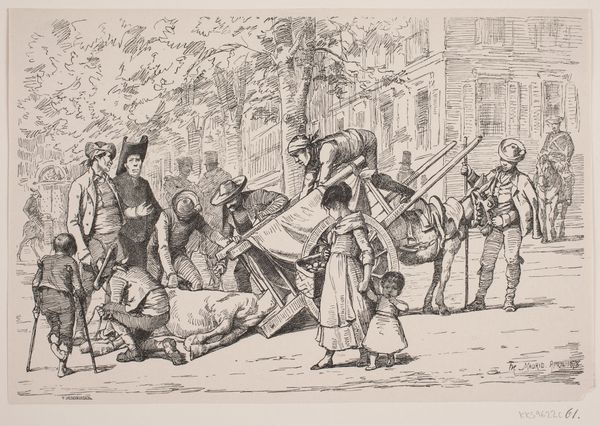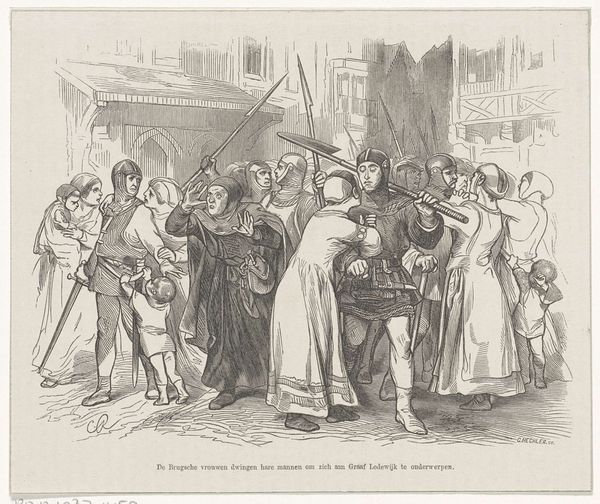
print, engraving
# print
#
cityscape
#
genre-painting
#
history-painting
#
engraving
Dimensions: height 152 mm, width 237 mm
Copyright: Rijks Museum: Open Domain
Curator: Immediately, I notice the frantic energy and chaos depicted in this piece. The dark lines and the tumbling figures really convey the sense of upheaval and surprise. Editor: Indeed. This engraving by Johannes Henderikus Morriën, dating from around 1853-1861, depicts the 1747 French surprise attack on Bergen op Zoom. A moment frozen in time. Curator: Yes, history embodied. What strikes me is the central figure on horseback, perhaps a commander? He seems almost like an allegorical figure of authority amid the disorder. What meaning do you think the artist hoped to convey? Editor: I think we're looking at how history is constructed and who gets to tell the story. While ostensibly illustrating a historical event, Morriën's image participates in shaping Dutch national identity in the 19th century. Bergen op Zoom was of great strategic importance; its fall caused immense dismay among the Dutch. I suspect the choice of depicting this event was quite deliberate. Curator: Precisely, and it's a powerful method of communication. Take the fallen soldier in the foreground. His posture suggests defeat, but it also serves to remind viewers of past national struggles. The city itself—depicted in shadowy lines behind the conflict—serves as a reminder of the enduring Dutch spirit. Editor: Absolutely, but I also see a glorification of warfare and authority. The officers, even amid chaos, appear poised, swords drawn, ready to enforce dominance. The artist here perhaps unwittingly endorses structures of power inherent in the story he’s telling. It isn’t simply a depiction of surprise, it’s a reinforcement of a certain perspective on how conflict plays out, its consequences, and who is entitled to bear arms and command. Curator: I concur. Morriën is embedding an ideology. And whether intentional or not, it encourages audiences to understand this historic battle in a certain light. The cityscape almost becomes an icon, an ideal to defend. Editor: Well, that prompts important questions about what we do with history and the ways in which images reinforce or dismantle power. Thanks for making these observations visible. Curator: Indeed, a reminder that visual stories carry more than what appears on the surface. They are conduits of meaning that shift through the ages.
Comments
No comments
Be the first to comment and join the conversation on the ultimate creative platform.


